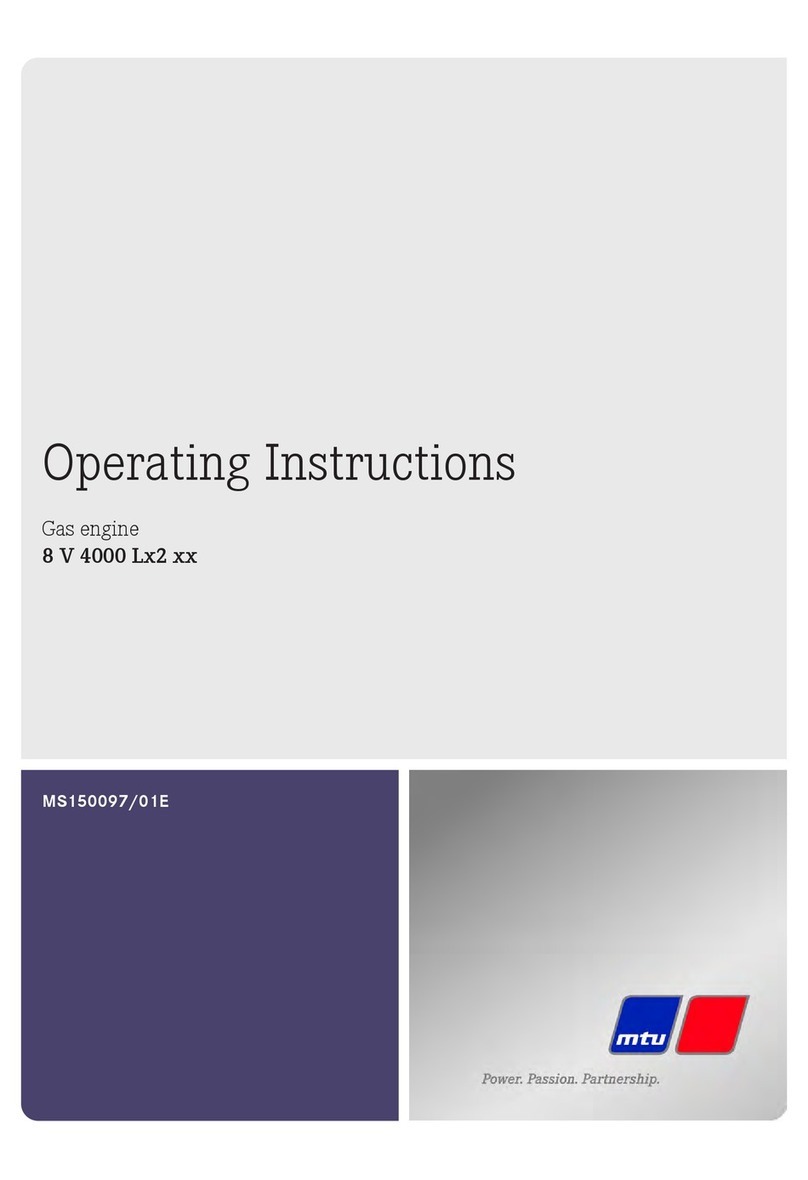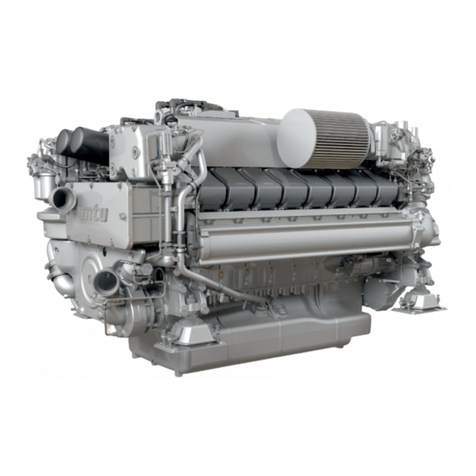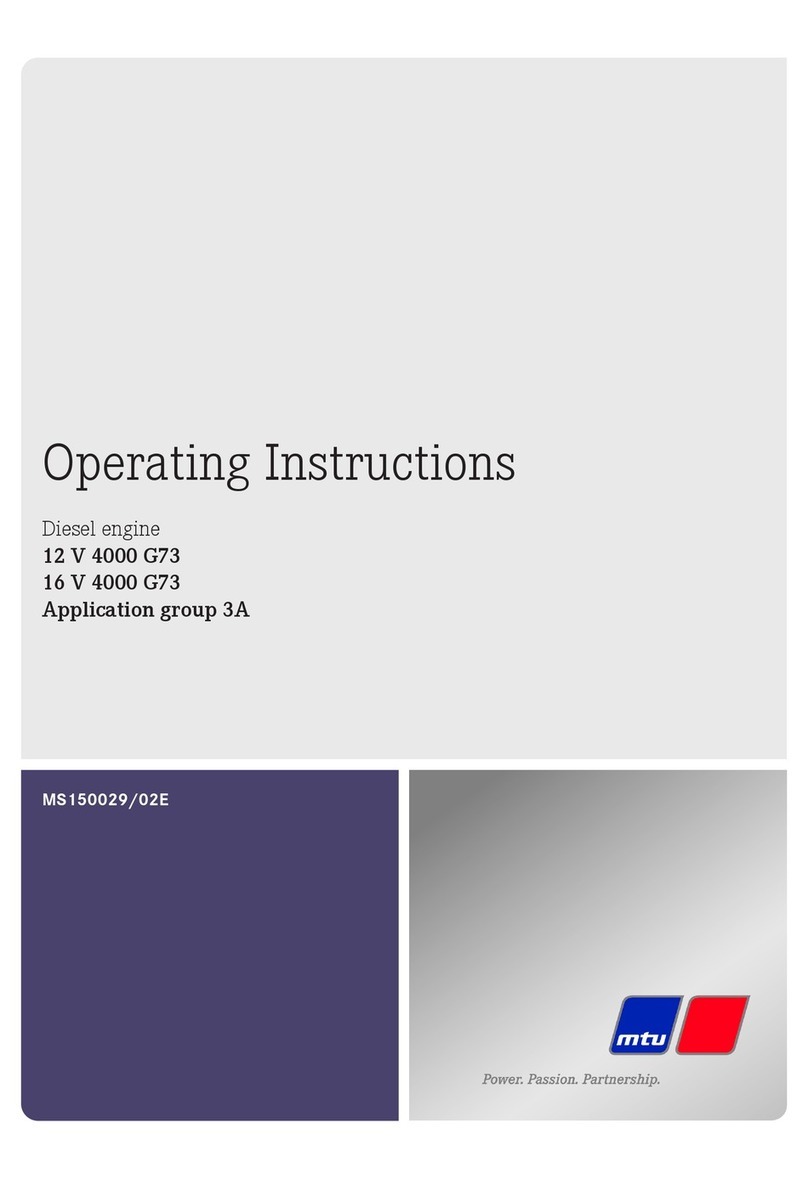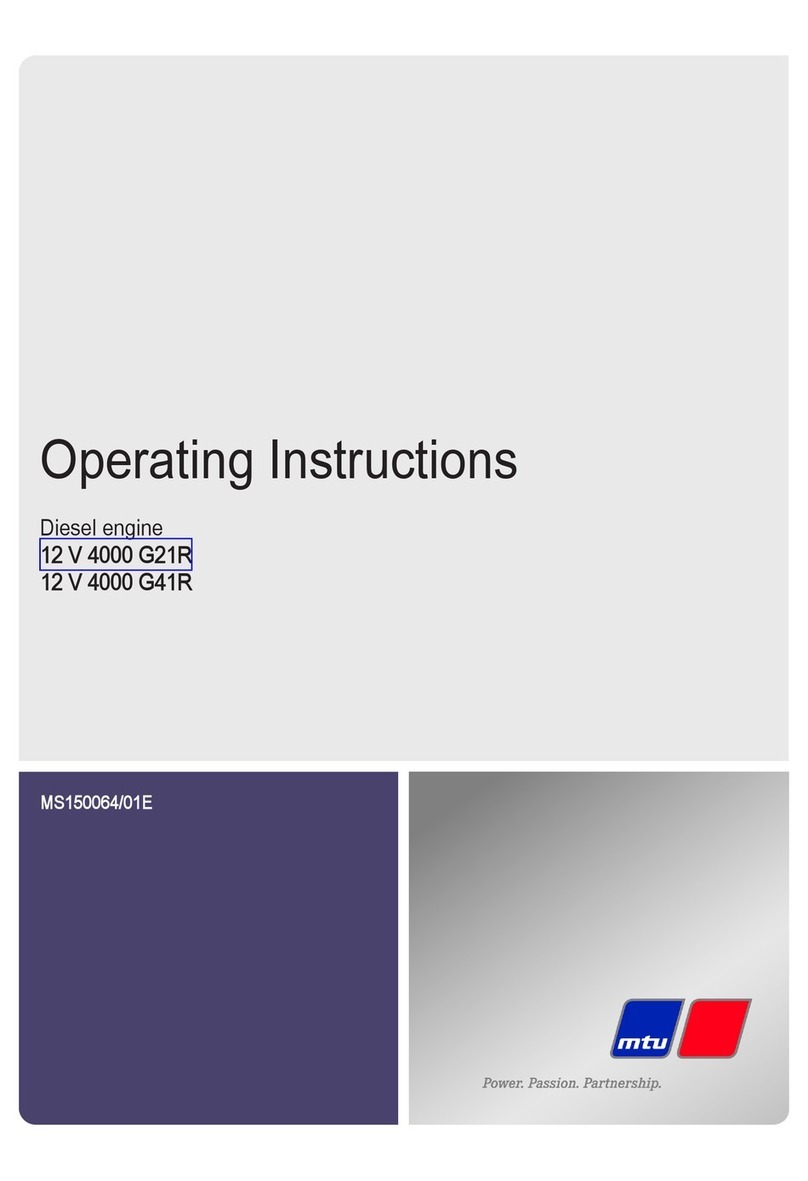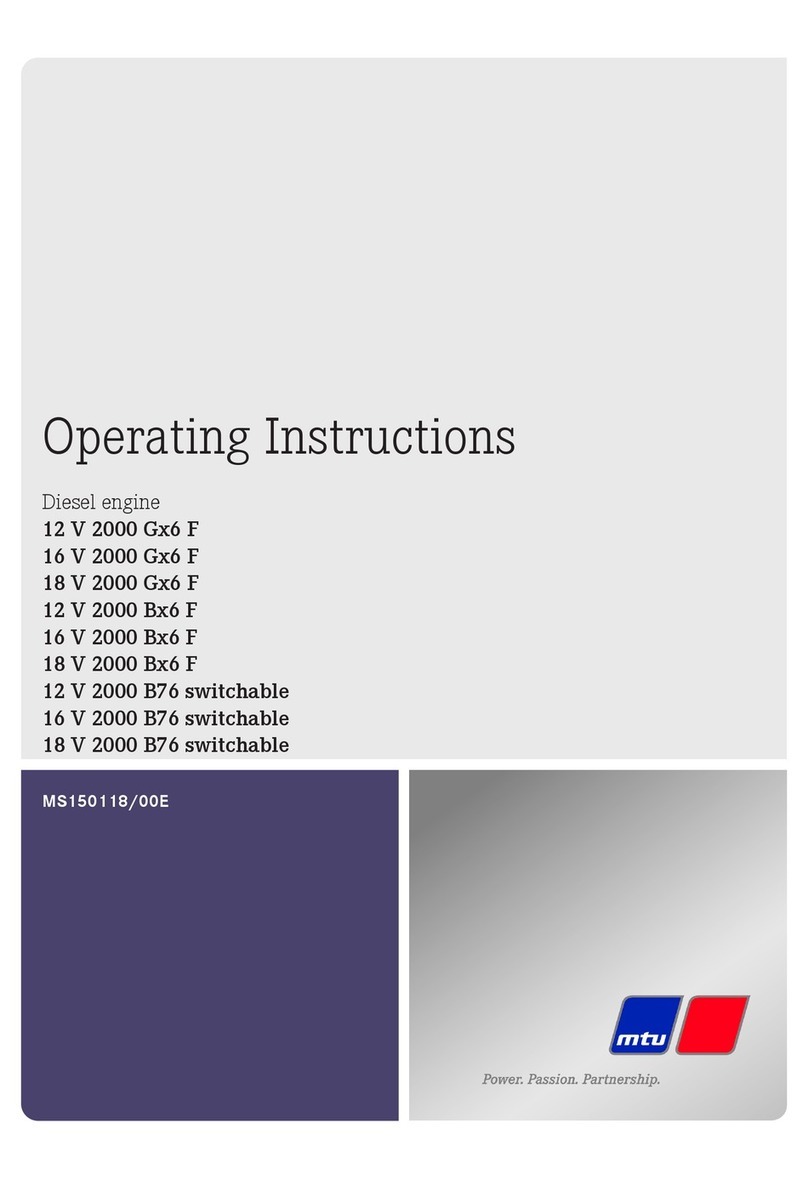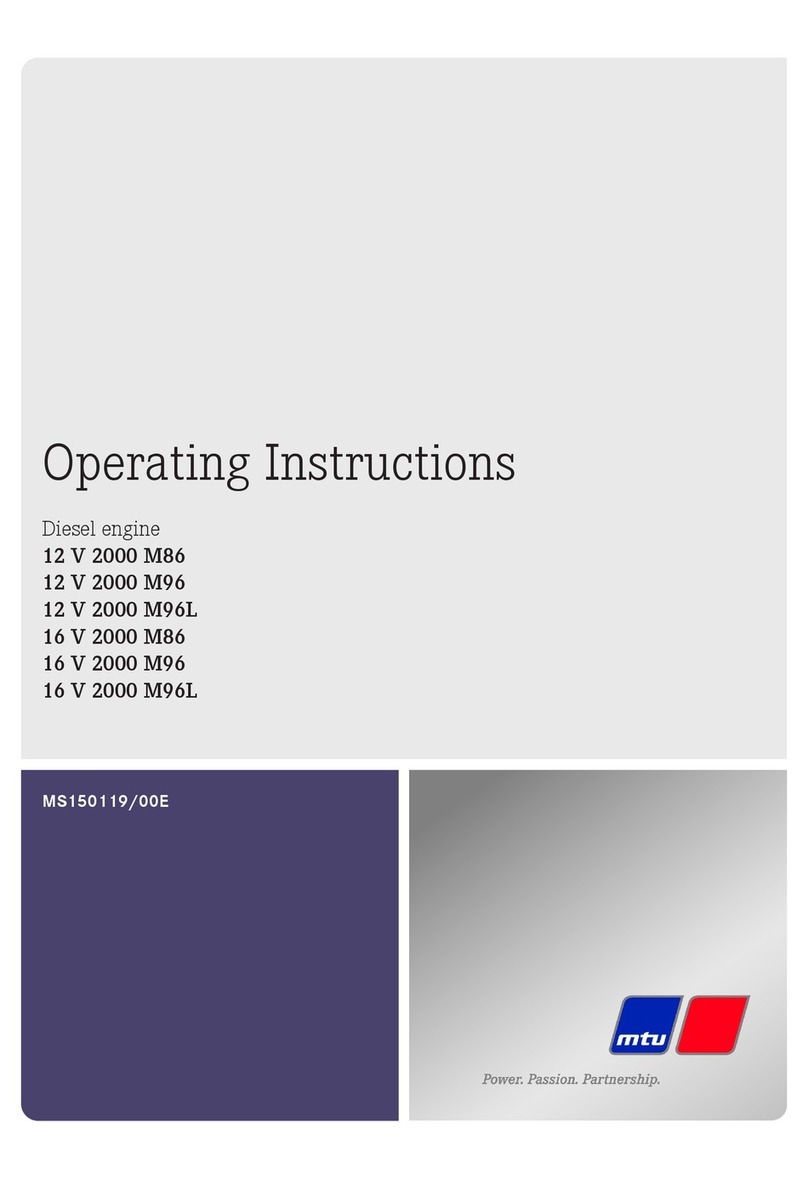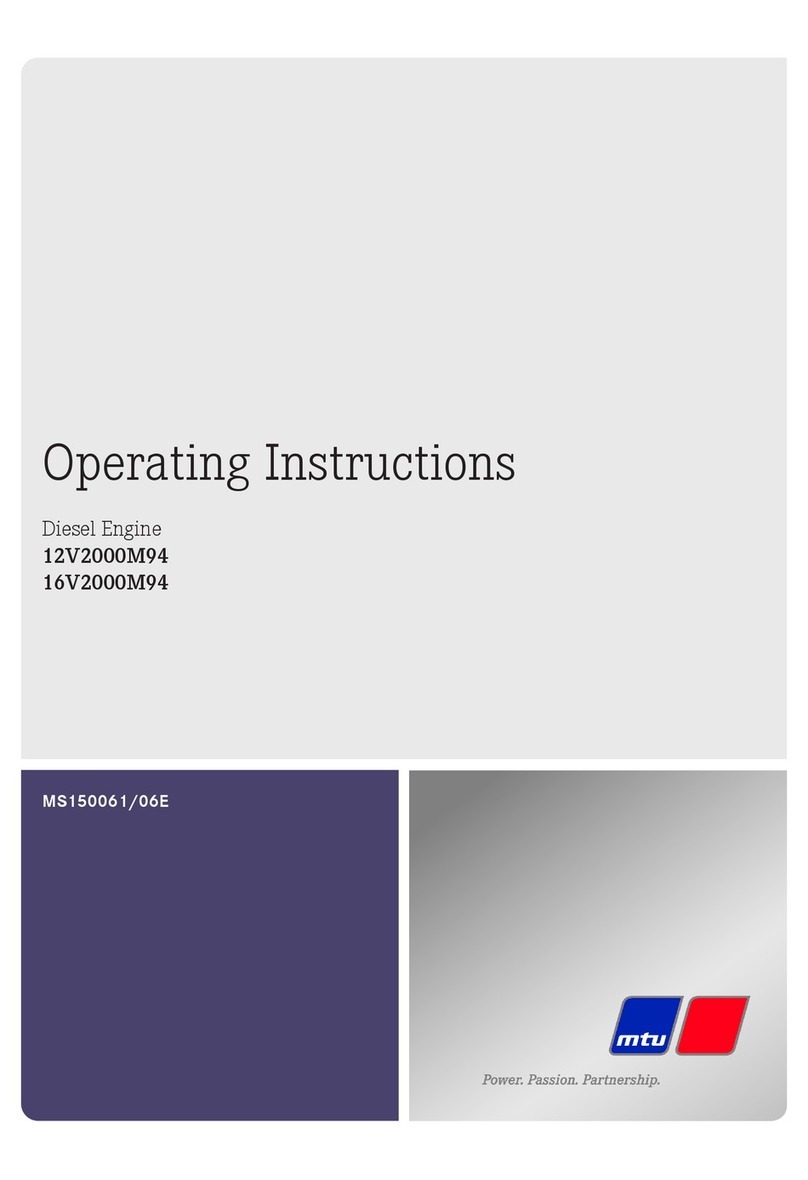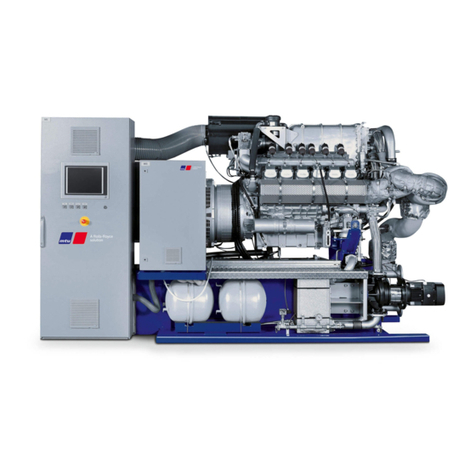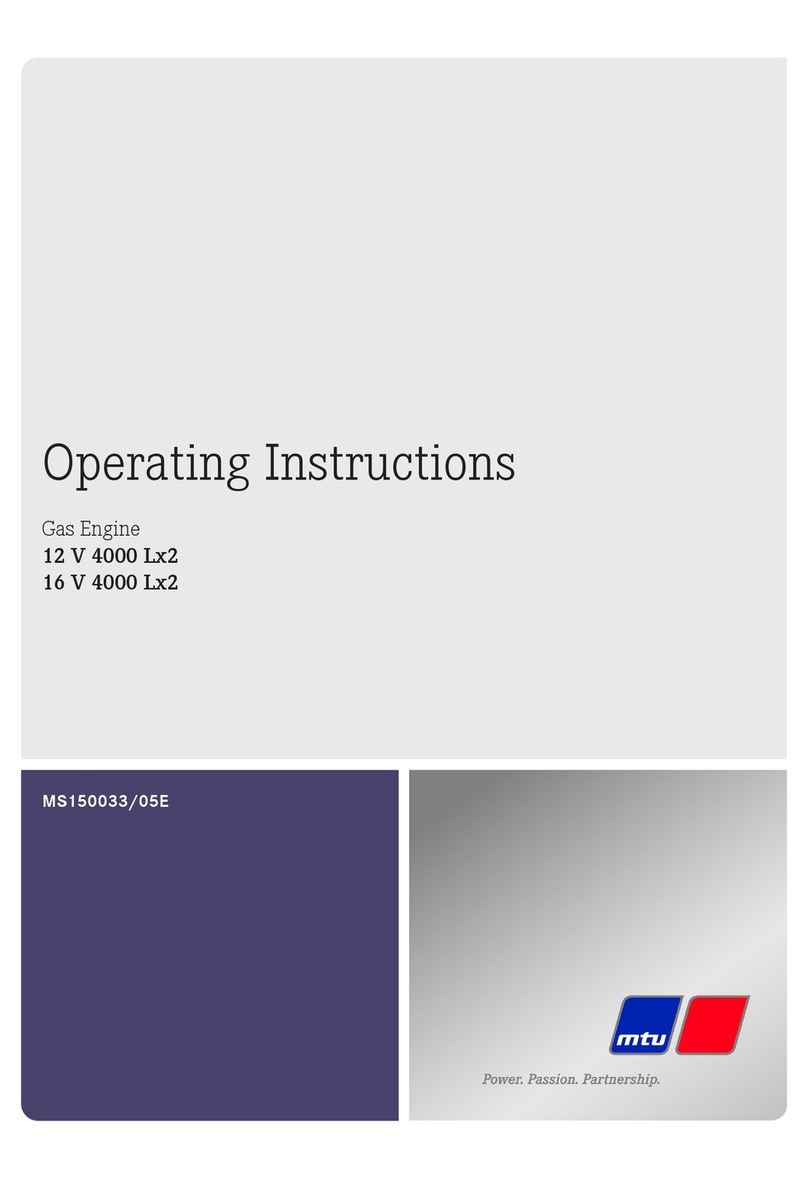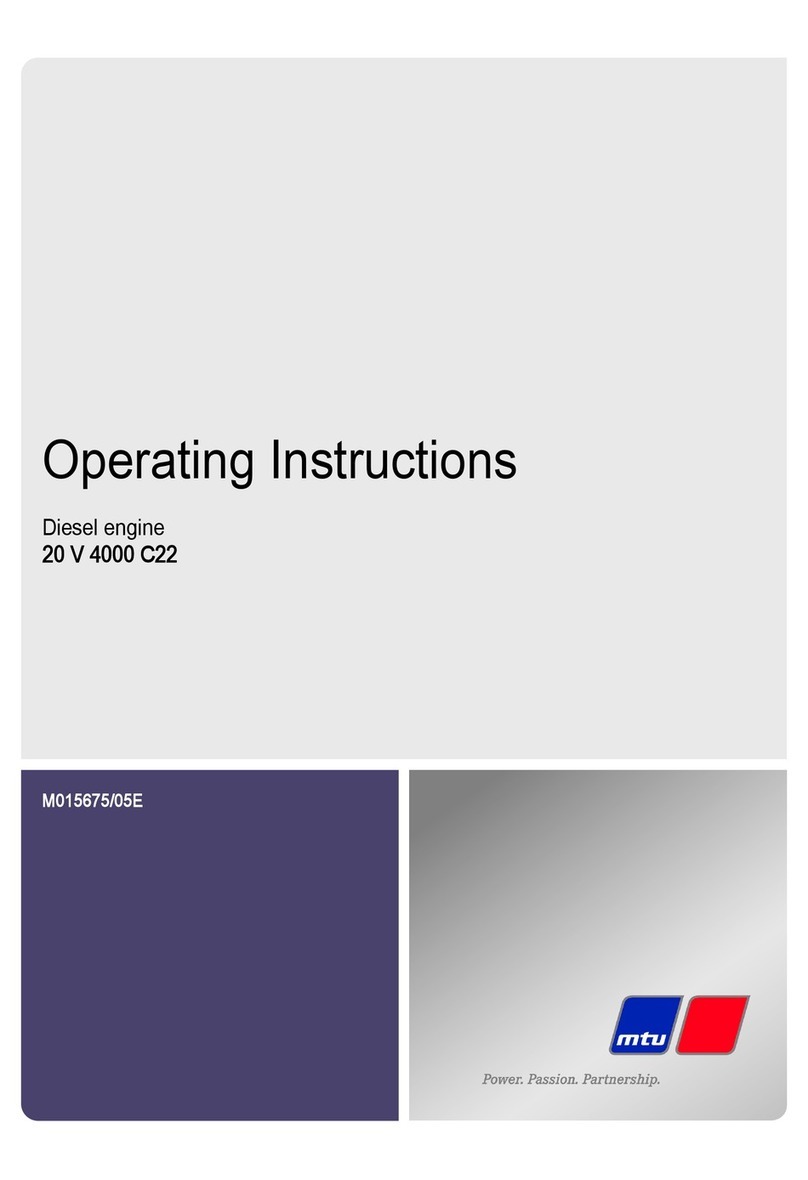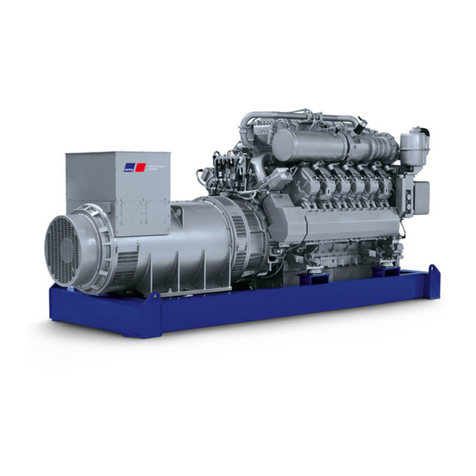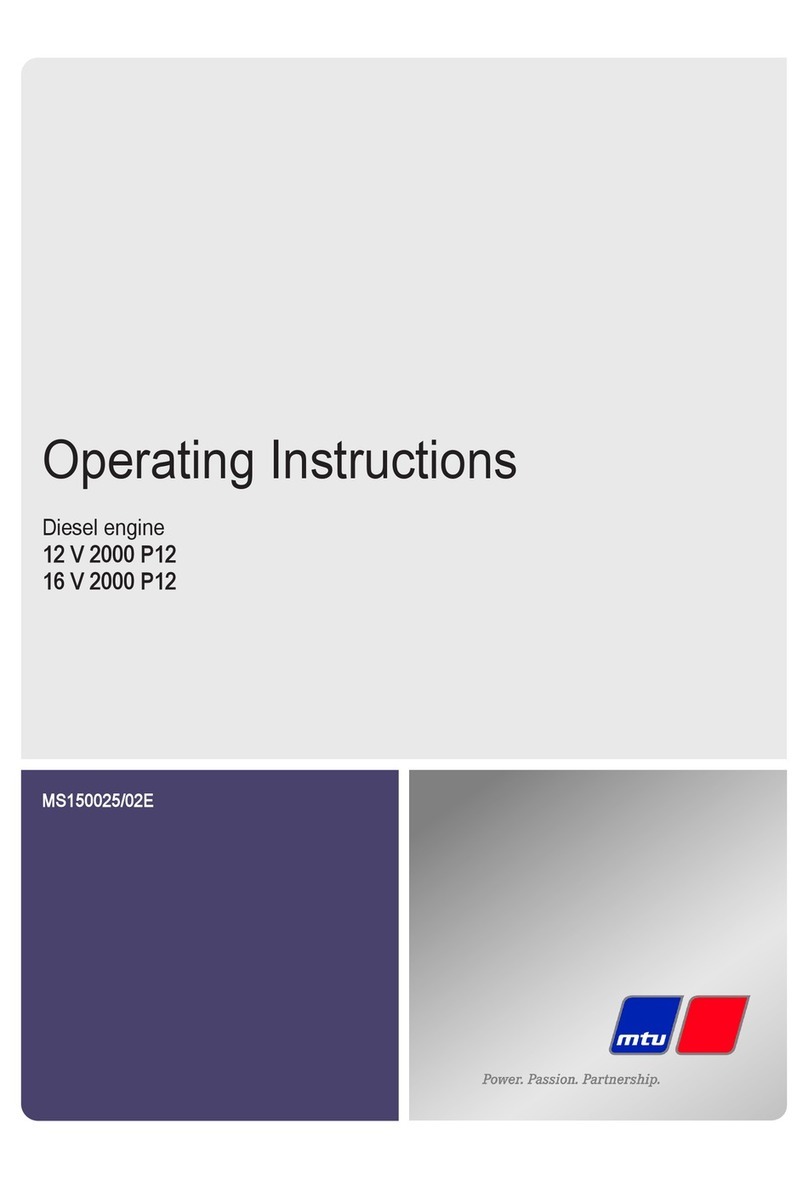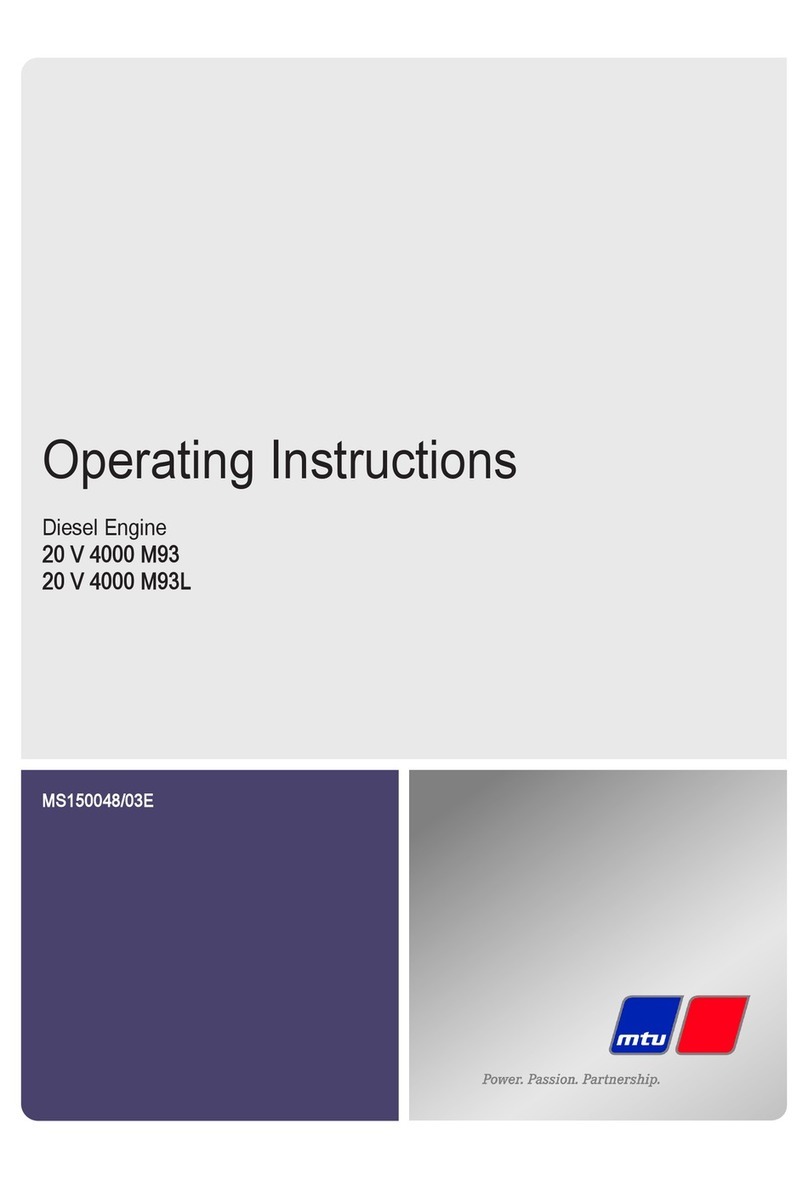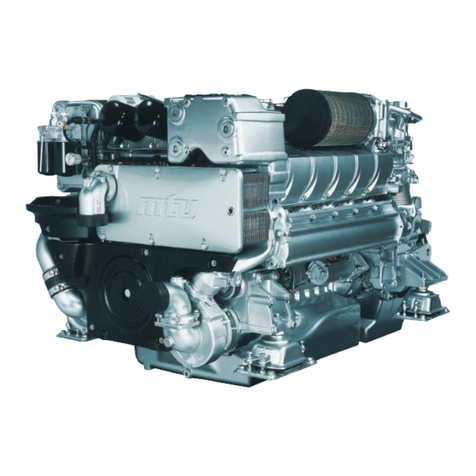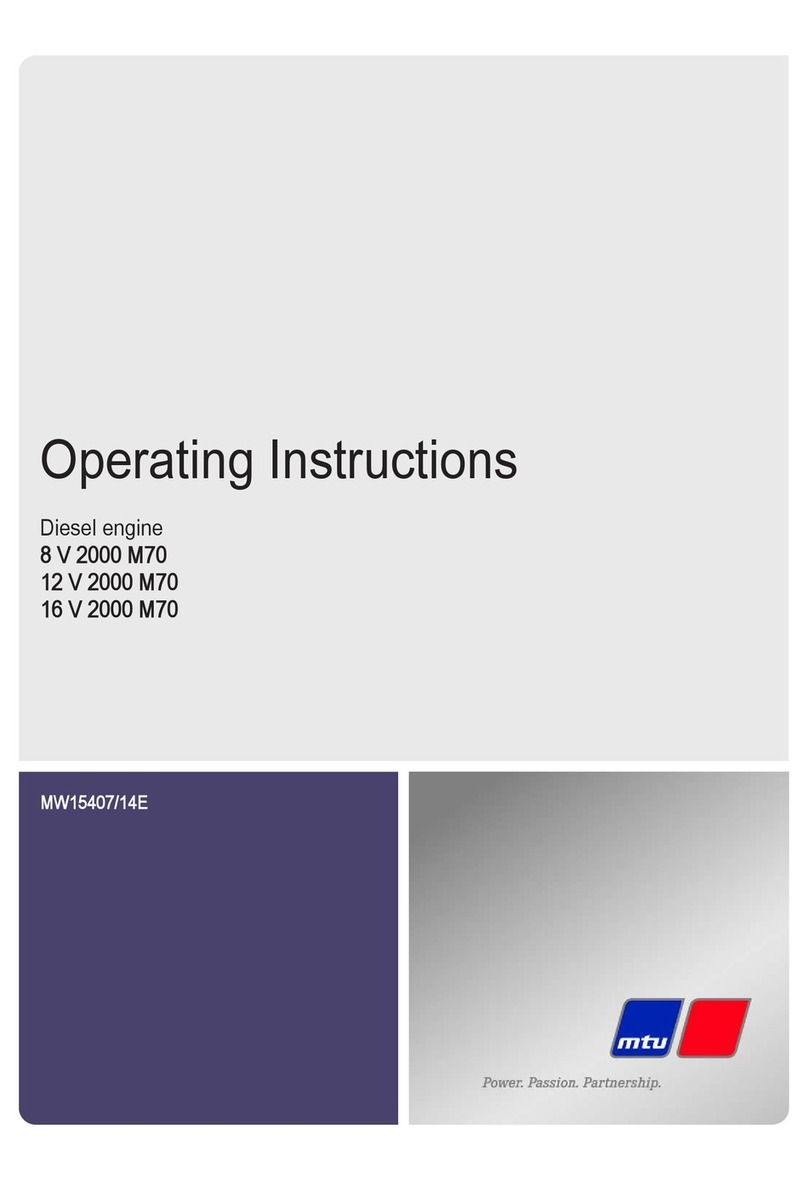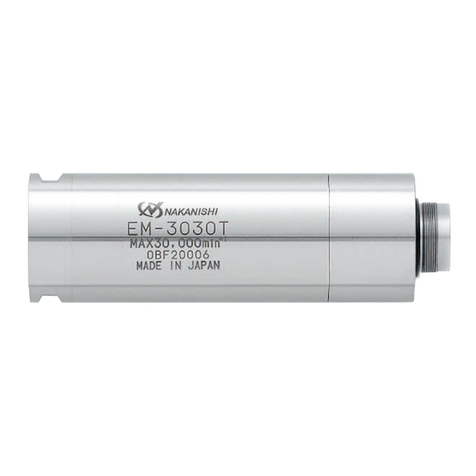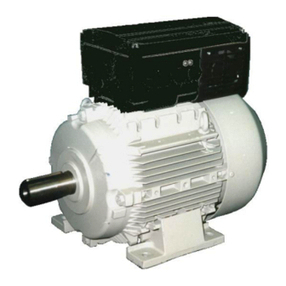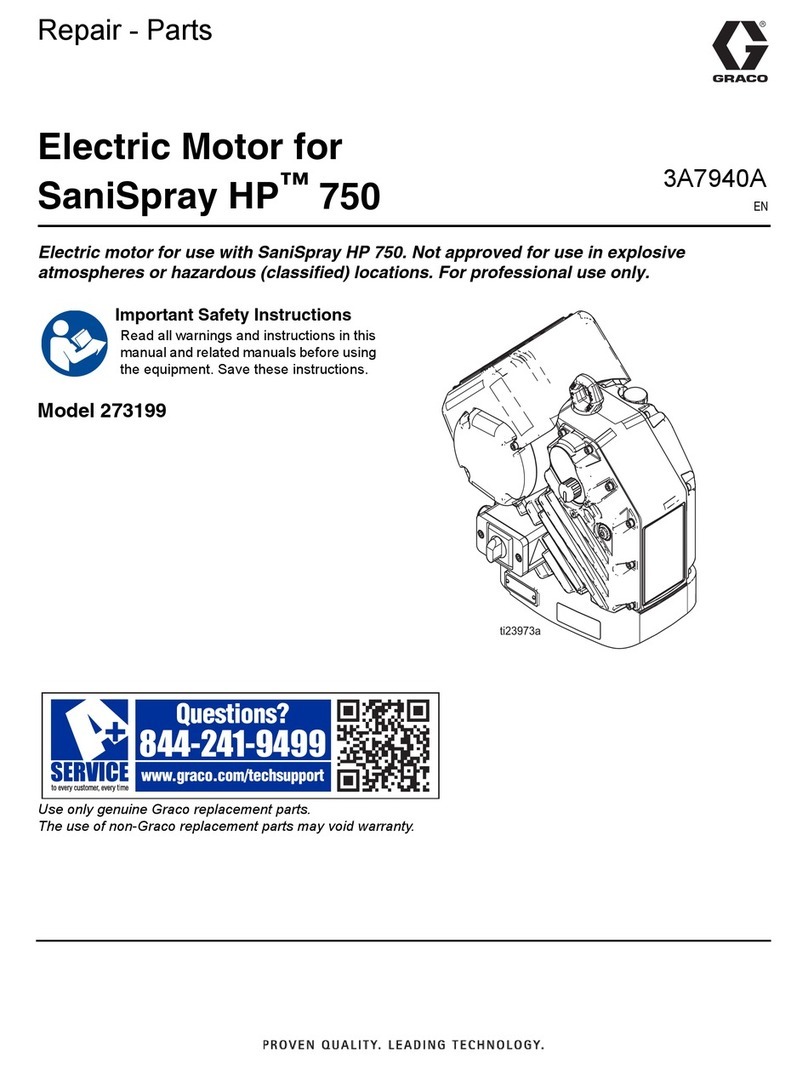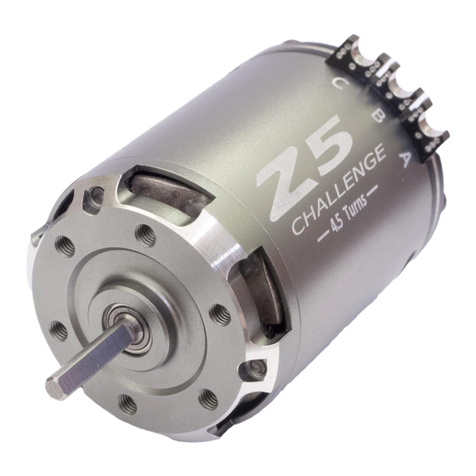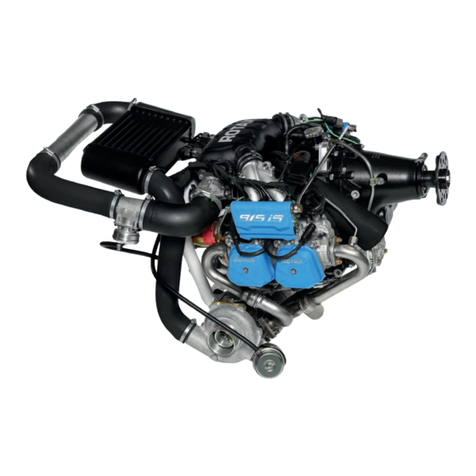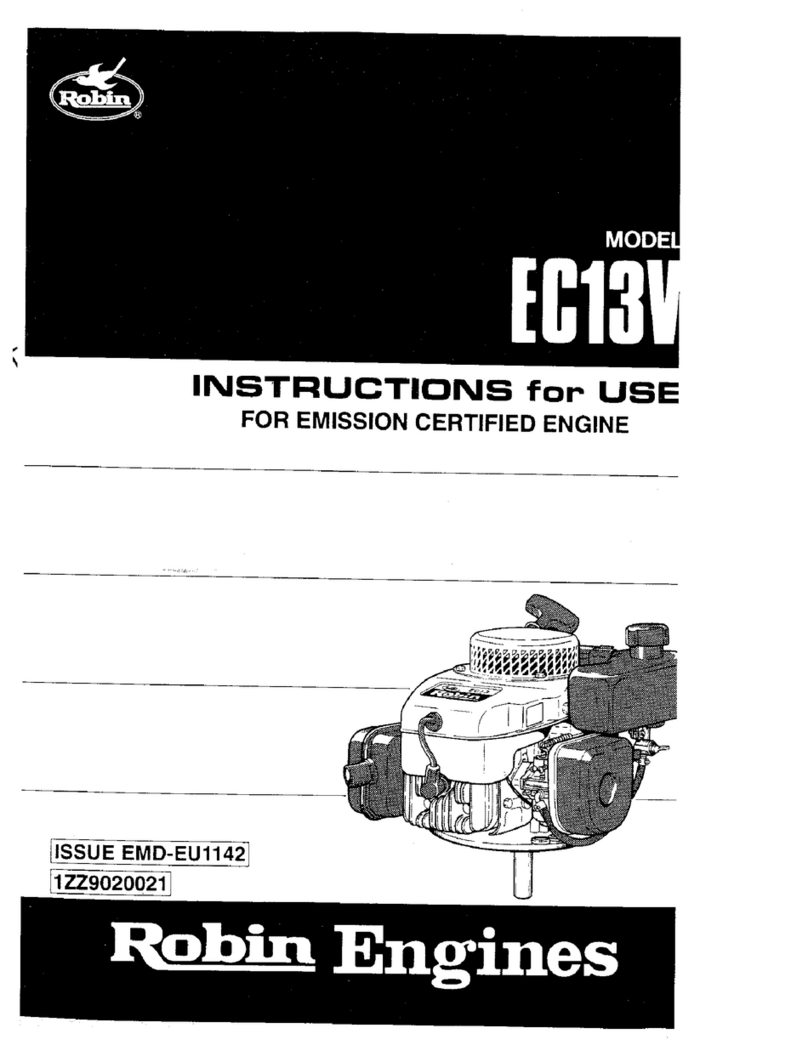Table of Contents
1 Safety
1.1 Important requirements for all products 5
1.2 Personnel and organizational requirements 6
1.3 Transport 7
1.4 Safety requirements for startup and
operation 9
1.5 Safety requirements for maintenance and
repair work 10
1.6 Fire prevention and environmental
protection, fluids and lubricants, auxiliary
materials 13
1.7 Standards for safety notices in the text 15
2 General Information
2.1 Tightening specifications for screws, nuts
and bolts 16
2.2 Engine side and cylinder designations 27
2.3 Product description 28
2.4 Engine layout 34
2.5 Sensors and actuators – Overview 36
3 Technical Data
3.1 12V 2000 M84 engine data 41
3.2 16V 2000 M84 engine data 44
3.3 Firing order 47
3.4 Engine – Main dimensions 48
4 Operation
4.1 Putting the engine into operation after
extended out-of-service periods (>3 months) 49
4.2 Engine – Putting into operation after
scheduled out-of-service-period 50
4.3 Tasks after extended out-of-service periods
(>3 weeks) 51
4.4 Checks prior to start-up 52
4.5 Fuel treatment system – Putting into
operation 53
4.6 Operational checks 55
4.7 Fuel treatment system – Switching on 56
4.8 Starting the engine 57
4.9 Engine – Shutdown 58
4.10 Emergency engine stop 59
4.11 After stopping the engine 60
4.12 Fuel treatment system – Shutdown 61
4.13 Plant – Cleaning 62
5 Maintenance
5.1 Maintenance task reference table [QL1] 63
6 Troubleshooting
6.1 Fuel treatment system – Troubleshooting 64
6.2 Troubleshooting 65
7 Task Description
7.1 SOLAS 68
7.1.1 SOLAS shielding as per MTN 5233 –
Installation 68
7.1.2 SOLAS shielding – Installation 69
7.1.3 Installation locations for SOLAS shielding 70
7.2 Engine 75
7.2.1 Engine – Barring manually 75
7.2.2 Engine – Cranking on starting system 76
7.3 Cylinder Liner 77
7.3.1 Cylinder liner – Endoscopic examination 77
7.3.2 Instructions and comments on endoscopic and
visual examination of cylinder liners 79
7.4 Crankcase Breather 81
7.4.1 Crankcase breather – Cleaning oil pre-
separator element 81
7.4.2 Crankcase breather – Oil separator element
replacement, diaphragm check and
replacement 82
7.5 Valve Drive 84
7.5.1 Valve clearance – Check and adjustment 84
7.5.2 Cylinder head cover – Removal and
installation 86
7.6 Injection Valve / Injector 87
7.6.1 Injector – Replacement 87
7.6.2 Injector – Removal and installation 88
7.7 Fuel System 90
7.7.1 Fuel system – Venting 90
7.8 Fuel Filter 91
7.8.1 Fuel filter – Replacement 91
7.8.2 Fuel prefilter – Differential pressure check
and adjustment of gauge 93
7.8.3 Fuel prefilter – Draining 94
7.8.4 Fuel prefilter – Flushing 96
7.8.5 Fuel prefilter – Filter element replacement 98
7.9 Charge-Air Cooling 100
7.9.1 Intercooler – Checking condensate drain line
for coolant discharge and obstruction 100
7.10 Air Filter 101
MS150063/02E 2014-03 | Table of Contents | 3
DCL-ID: 0000016266 - 002
